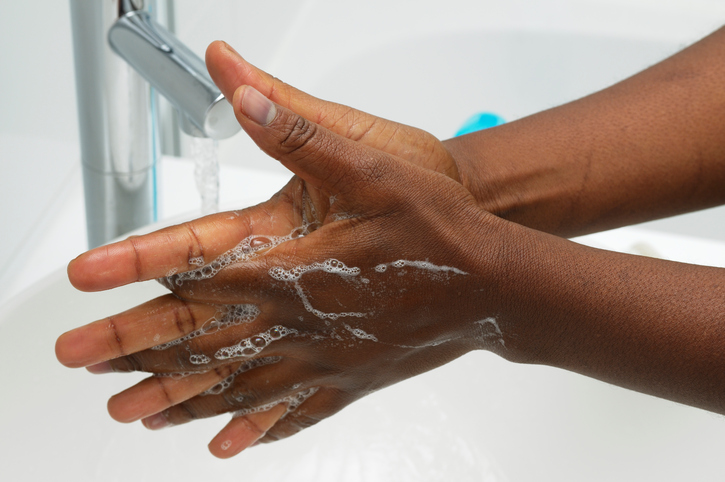Blog

Cooking at home is becoming more and more popular, which is great because it usually means healthier food and money saved! I love prepping my own meals at home. It’s a chance to make something new and delicious while controlling what I want to go in it. A home kitchen can be a wonderful spot to explore recipes, try out new skills, and even spend more time with your family and friends; however, kitchens can easily become a spot for accidents if you are not taking the correct safety precautions. Here are some quick tips to get you started and keep you safe while cooking.
1. Wash your hands. Having clean hands is one of the best techniques to prevent foodborne illness and contamination. This Wash Your Hands poster gives a great example of how to correctly wash your hands. Also, if you have long hair, be sure to tie it back before washing your hands to keep it away from your face and out of the food.
2. Have a clean work area and clean tools. Having a clean area can cut down on the chances of food contamination and keep you organized. Who wants to work in a dirty kitchen anyway? Be sure that all equipment you use, such as knives, cutting boards, bowls, and other tools are clean and dry before use. Also, keep all cabinet doors and drawers closed to avoid injury and spills.
3. Wash and check your ingredients. If you’re using fresh fruits and vegetables, be sure to wash them thoroughly with cool, running water, being sure to remove all signs of dirt. Also, check them over for signs of spoilage. If you see soft spots, mold, or other signs of spoilage, be sure to throw out the piece of food to avoid food borne illness.
4. Keep cold food cold and hot food hot. Cold foods should be kept below 40°F and hot foods should be kept at 140°F or above. This helps to keep ingredients from spoiling. This means that if you need a cold ingredient, such as milk, only take it out of the fridge when you need it, and be sure to put it back when you are done.
Next week, I will share the second blog in our kitchen safety series with tips on knife safety.
Written by Annie Contrady, ISU Dietetic Intern
